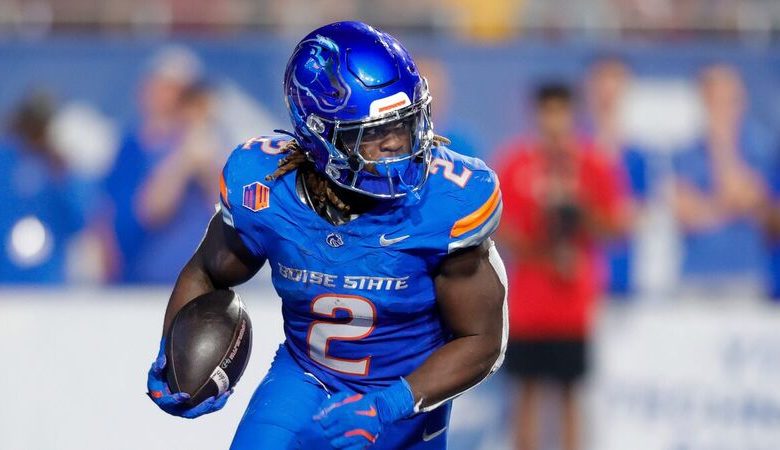The NIL era demands significant financial backing for sustained dominance. Even wealthy programs need deep-pocketed donors to compete.

The college football world has undergone a seismic shift in recent years, with the introduction of Name, Image, and Likeness (NIL) rights dramatically changing the way college athletics operate. What was once a system that relied on the amateurism of student-athletes is now a billion-dollar industry that has created a complex dynamic between schools, athletes, and donors. The NIL era has introduced a new layer to the competitive landscape, where financial resources play an increasingly critical role in building and maintaining elite programs.
While programs like Alabama, Ohio State, and Clemson have long been considered college football powerhouses, sustaining dominance in the current environment requires more than just good coaching, elite talent, and a rich tradition. It now requires serious financial backing, and deep-pocketed donors are at the heart of this new reality. The financial arms race that defines the NIL era has created new opportunities for schools to attract top-tier talent but also presents new challenges for programs that may not have the same access to vast resources.
In this article, we explore how the NIL era is reshaping the college football landscape, the role of donors in this new environment, and the implications for programs like Alabama, particularly in light of Nick Saban’s potential retirement.
NIL and the Financial Landscape of College Football
Before the introduction of NIL rights, college athletes were not permitted to profit off their own name, image, or likeness while maintaining their eligibility. This created an inherent imbalance where schools with the most resources could provide top-tier facilities, coaching, and academic support, but athletes were still required to maintain their “amateur” status. The NCAA’s decision to allow NIL deals in 2021 effectively opened the door for athletes to monetize their presence on social media, sign endorsement deals, and benefit financially from their athletic success in ways previously not allowed.
The impact of NIL has been profound. For the first time, athletes can sign endorsement deals with companies and influencers, sell autographed memorabilia, and earn a living off their personal brand while playing college sports. The result is a major shift in the way college programs recruit and build rosters. Programs that can offer the most lucrative NIL opportunities are able to attract top talent, while schools without the same resources may struggle to compete.
While NIL rights allow for athletes to make money off their own likeness, the true driving force behind the financial arms race in college football is the way in which schools, boosters, and third-party collectives have created financial entities to support student-athletes. In many cases, alumni and supporters of college programs are actively working to funnel money into NIL deals for athletes, and in some cases, these deals are directly tied to a school’s recruitment efforts.
For programs that have long been competitive, the rise of NIL has increased the pressure to maintain success in a rapidly evolving market. Alabama, under the leadership of Nick Saban, has long been a powerhouse in college football, but even the Crimson Tide are not immune to the financial demands that have come with the NIL era.
Nick Saban and the Pressure of the NIL Era
Nick Saban’s tenure as head coach at Alabama has been nothing short of legendary. Since arriving in Tuscaloosa in 2007, Saban has built the Crimson Tide into one of the most dominant programs in the history of college football, capturing multiple national championships and consistently producing NFL-caliber talent. His ability to recruit, develop, and sustain success has made him one of the most respected coaches in the sport.
However, the advent of NIL has introduced new complexities that Saban, along with other head coaches, must navigate. Recruiting is no longer just about finding the best athletes; it’s about understanding the landscape of NIL deals, how they affect a program’s ability to retain players, and how to balance traditional recruiting with the reality of financial compensation. Saban has been outspoken about the challenges posed by NIL, recognizing that the landscape has changed in ways that could make or break a program’s future success.
One of the key issues surrounding NIL is the growing reliance on wealthy alumni and donors to fund NIL opportunities for athletes. While Alabama has the financial resources to compete in this new world, it still requires consistent, deep-pocketed donors to maintain an edge in recruiting and player retention. Schools without such financial backing are at a distinct disadvantage, as NIL deals often play a key role in a player’s decision to commit to a particular program.
This raises questions about the future of college football powerhouses like Alabama. Even programs with significant resources face the challenge of sustaining dominance in the NIL era. The Crimson Tide, for example, have a long history of success, but that success has always been closely tied to recruitment and development. If Saban were to retire, the task of maintaining that success would fall to his successor, who would need to build relationships with deep-pocketed donors and navigate the ever-changing NIL landscape.
The Role of Donors and Collectives in the NIL Era
One of the most significant shifts in the NIL era is the central role of donors and third-party collectives in supporting athletes. These collectives, often formed by alumni, businesses, and other supporters of college programs, provide financial resources for NIL deals. For programs like Alabama, whose alumni network includes some of the most powerful and wealthy individuals in the country, these collectives are vital for remaining competitive.
At the heart of the NIL financial landscape are donor-run collectives, which are responsible for negotiating and facilitating NIL deals for athletes. These collectives are often established by passionate alumni who want to ensure that their school remains competitive in recruiting. Through these collectives, student-athletes can receive compensation for their performance, while schools benefit from the resources needed to continue attracting elite talent.
For example, Alabama’s “Bama NIL” collective has played a central role in ensuring that the Crimson Tide remain competitive in this new era of college football. The collective has created opportunities for Alabama players to sign endorsement deals and receive compensation for their likeness, often making the school more appealing to high-profile recruits. This financial backing is essential for keeping Alabama on top and maintaining its status as one of the premier programs in college football.
However, not all schools have access to the same level of financial resources. Schools in smaller markets or those without the same deep-pocketed alumni bases face significant challenges in trying to build competitive programs. While wealthy programs can rely on their alumni to fund NIL deals, programs with less financial backing may struggle to attract top-tier talent. The disparity between programs that can afford to offer lucrative NIL deals and those that cannot is creating an uneven playing field in college football, where money has become a critical factor in recruiting success.
The Future of College Football: Adapting to the NIL Era
The introduction of NIL rights has fundamentally changed the way college football operates. No longer is recruiting solely about a coach’s ability to sell a program; it’s now also about the financial opportunities that come with joining a particular school. For programs like Alabama, which have traditionally relied on strong coaching, facilities, and talent development, the new focus on NIL presents both opportunities and challenges.
In the short term, schools with deep-pocketed donors and well-established NIL collectives are at a distinct advantage. These programs have the financial backing to secure top recruits and retain their best players. However, in the long run, the financial disparity between programs could widen, leading to a greater gap between the haves and have-nots in college football. Programs without access to these resources will struggle to compete at the highest level, making it more difficult for them to maintain consistent success.
The role of donors and collectives in shaping the future of college football will be pivotal. As more programs embrace NIL opportunities, the need for strategic, organized financial backing will only increase. In the case of Alabama, this means continued collaboration with alumni and donors to fund NIL deals that keep the Crimson Tide competitive. For other programs, it may require building new relationships and expanding their donor base to compete in the rapidly evolving landscape.
For Nick Saban, his retirement—whether imminent or not—will mark the beginning of a new chapter for Alabama. The next head coach will need to adapt to a new era of college football, where recruiting is as much about building financial relationships as it is about developing players. Saban’s successor will need to continue the legacy of success, but they will also need to understand how to leverage NIL opportunities effectively and navigate the increasingly complex financial terrain.
Conclusion: A Changing Game in College Football
The NIL era has ushered in a new chapter in college football, where financial resources are as important as talent development and coaching. For programs like Alabama, which have long been at the top of the sport, maintaining success in this new landscape requires deep-pocketed donors and a well-organized collective to support athletes. While the financial backing necessary to sustain dominance is readily available at Alabama, other programs may struggle to compete if they cannot secure similar resources.
The retirement of Nick Saban, whether it comes soon or not, will mark a critical turning point for Alabama. The program’s ability to continue its dominance will depend on how well the next head coach navigates the changing landscape of college football, where recruiting is not only about developing players but also about building financial partnerships. The reality of the NIL era is clear: without significant financial backing and committed donors, sustaining success in college football has become an increasingly difficult task.









